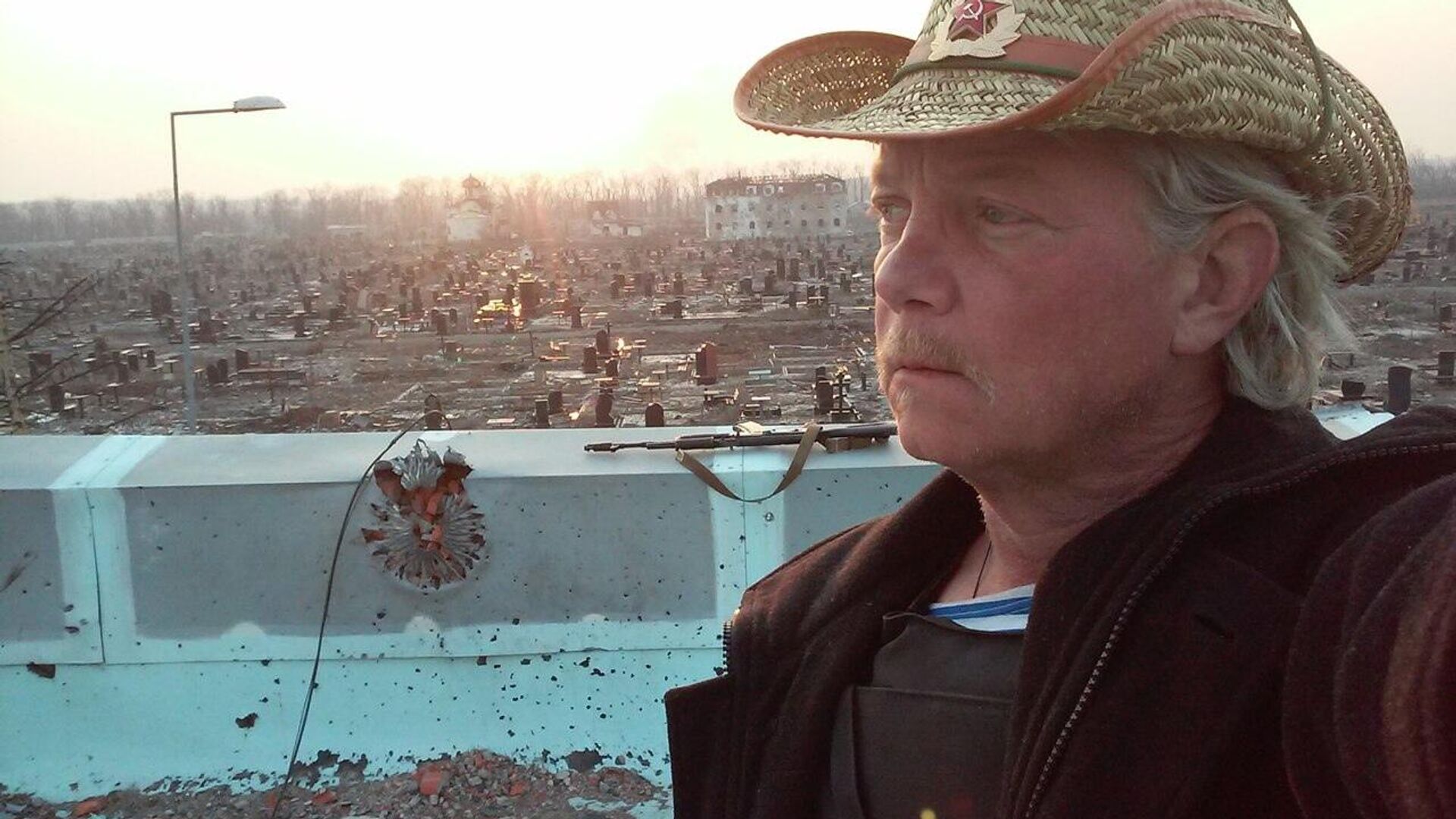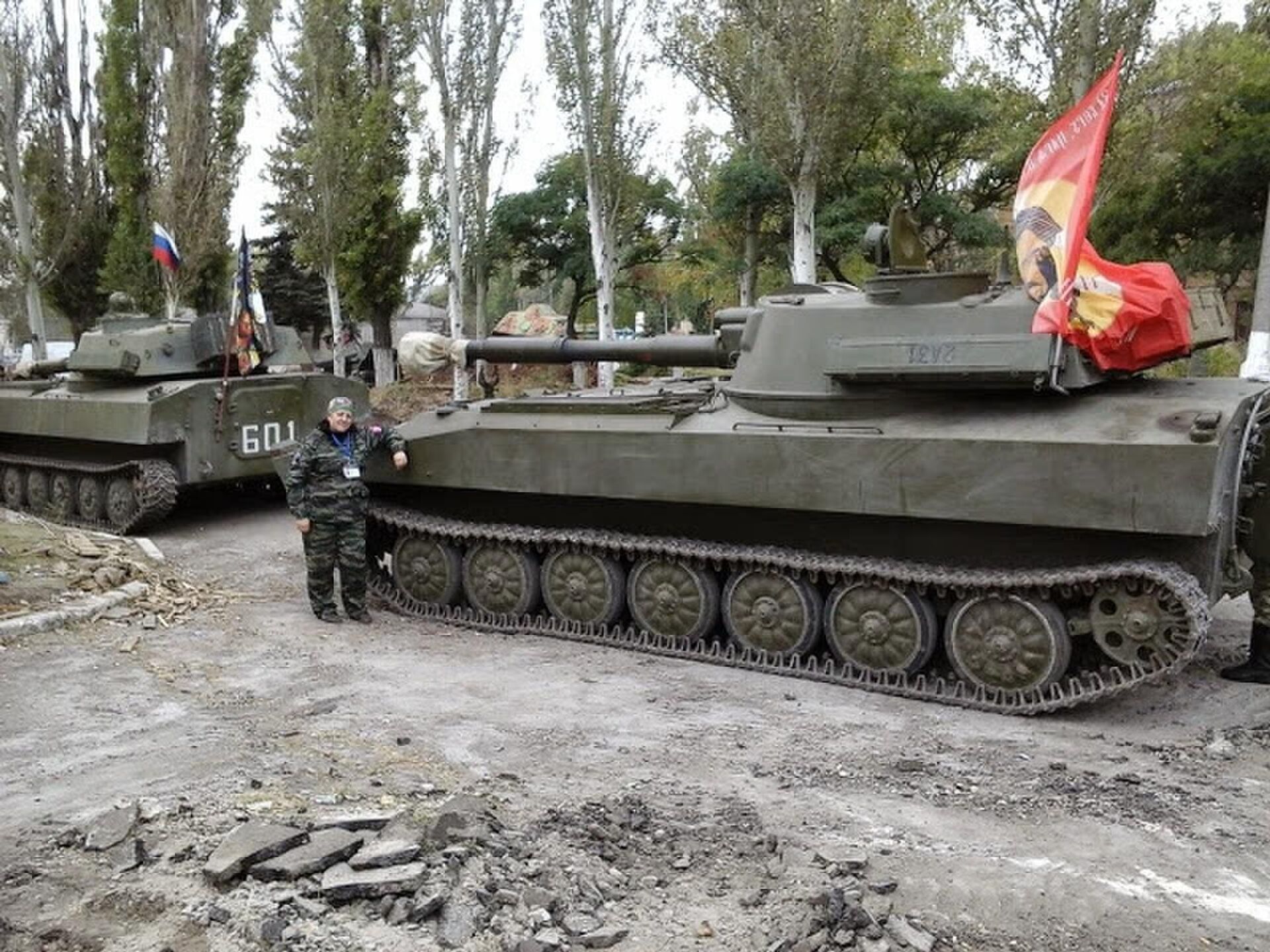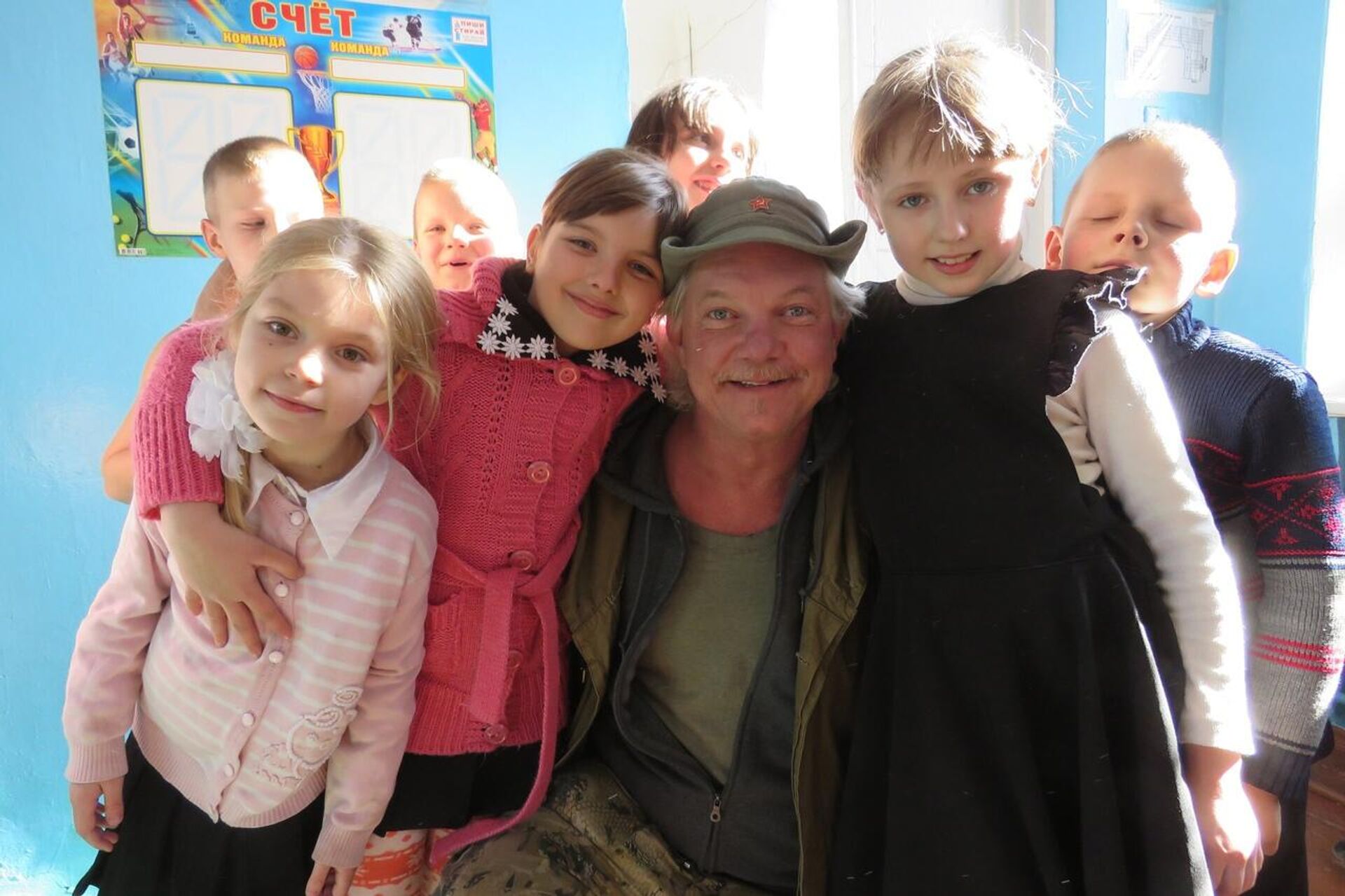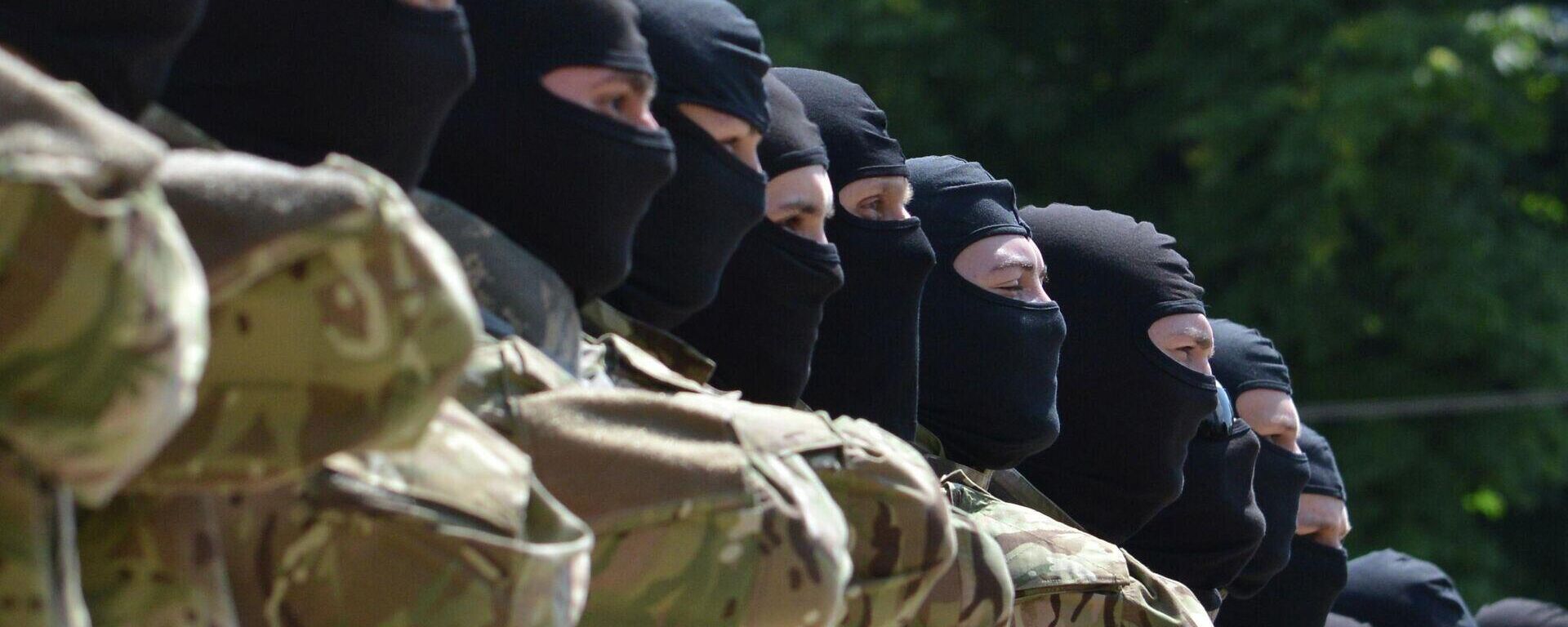Donbass: A Story of Defiance

Subscribe
Russell Bentley is no stranger to facing death. In December 2014, the Texas-native arrived in the Donbass region to help the newly-formed local militias defend against Ukrainian government forces. During his very first battle, Bentley narrowly dodged an enemy sniper bullet headed his way.
Not long afterwards, Bentley was sleeping in a basement after a long night of guard duty when his position came under Ukrainian artillery fire. As he awoke from his slumber, a shell smashed through the wall and landed next to him.
“I was pretty lucky because two chunks of shrapnel the size of a butcher’s knife blade came through my sleeping bag, but they barely missed my feet,” he said. “A few more inches and they would have definitely cut off my feet.”
Although Bentley retired from combat duty several years ago, he remained in Donbass as a war correspondent. Several days before our interview earlier this month, his home in Donetsk had been badly damaged during a Ukrainian HIMARs attack. The shell itself missed his building, but the ensuing shockwave shattered its windows and blew off the roof tiles.
Bentley and his wife were not home during the attack, so they thankfully emerged unscathed. A family living in a nearby building was not so fortunate. The mother was later found dead and the daughter buried under the rubble.

Russell Bentley, Donbass
© Photo : Russell Bentley
Following years of conflict, the people of Donetsk have learned to not take life for granted, Bentley said. He told Sputnik that when driving across the city, he sometimes came across cars and buildings that had been struck by Ukrainian artillery fire just minutes beforehand. “There’s a lot of fatalism in Donetsk, but also a sense of courage and defiance,” he said. “We will not kneel or surrender.”
Since 2014, the people of Donbass have shown their resilience in the face of constant hardship and seemingly overwhelming odds. Their homes have been bombarded by Ukrainian artillery systems for nearly nine years. With the help of NATO powers, the Kiev regime has repeatedly sent its troops to invade and subdue the proud industrial region. Despite all these trials, the people of Donbass remain committed to victory.
Sputnik spoke with Donbass militia fighters, activists, and volunteers. We asked them about how they were able to repel Kiev regime forces despite being heavily outnumbered and outgunned, the sacrifices they had to make for their convictions, and what gave them the strength to keep going all these years. This is their story of resistance.
Russian Spring of 2014
Nelli Taraban was a retired law enforcement officer in February 2014, when a Western-backed coup in Kiev overthrew the democratically-elected Ukrainian government of President Viktor Yanukovych. Taraban was horrified and decided to take action. She began helping organize rallies in her native Donetsk against the new regime’s unlawful seizure of power and virulently Russophobic ideology. Following the brutal massacre of peaceful protestors in Odessa on May 2, 2014, Taraban and fellow activists began to prepare for a referendum on Donetsk gaining independence from Ukraine.

Nelli Taraban, a retired law enforcement officer, Donbass
© Photo : Nelli Taraban
It soon became clear that the Kiev regime would not allow Donetsk to leave peacefully. As Ukrainian troops began moving east, Taraban took charge in organizing a volunteer battalion for the defense of the city. “Our battalion had 1,200 people. We were initially armed with sticks – We had no clothes, no food, nothing. Everything started from scratch,” she said.
Taraban was not alone in her endeavor. In the spring and summer of 2014, local militias were formed all across Donbass. The newly-created units attracted people of completely different socioeconomic statuses and political views. Coal miners and college professors, communists and monarchists all took up arms to defend their home region.

Nelli Taraban, a retired law enforcement officer in Donbass
© Photo : Nelli Taraban
Irina Popova, a lawmaker from Donetsk, told Sputnik that entire families enlisted in the militias, with sons and fathers going to the front while wives and daughters signed up for logistical support roles. The lack of proper supplies did not seem to deter anyone. “Just imagine, there were no weapons, nothing,” she said. “Our boys literally stood at checkpoints with their bare hands, with some kind of picket fences against the army of Ukraine.”
What motivated such a diverse group of people to risk their lives together? Necessity was the primary unifying force, Bentley explained. It was clear even in early 2014, that if Kiev regime forces entered Donetsk and Lugansk, they would show absolutely no mercy to the local civilians.
“Everyone had two things in common: We understood that we were fighting Nazis, just like our grandfathers did, and we understood that this was an existential fight that could only end in victory or death,” Bentley said. “We understood that in a very real way – the sort you can only understand when you see a mother getting shot by a sniper in front of her little kid in her yard while she's putting up laundry.”
Ukrainian reprisals against civilians was not an abstract possibility. Mikhail Shubin was living in Mariupol in April 2014, when a group of mothers organized a protest outside the city’s military barracks one evening. “The mothers wanted the authorities to allow conscripts whose terms of service had expired to go home. Instead, they were being kept closed like cattle in there,” he said. “When the mothers tried to pick them up, machine-gun fire was opened.”
That incident was the final straw for Shubin. Shortly after the massacre, he decided to enlist in the militia. “I realized that I had no other choice when America and Europe arrived at my home in their dirty boots in order to teach us how to live and force their ‘democracy’ on us,” he said.
At first, the militias struggled to find an answer for the Kiev regime’s overwhelming advantages in manpower, artillery, heavy armored vehicles, and combat aircraft. During the spring and summer of 2014, the Ukrainian military advanced through Donbass, reaching the outskirts of Donetsk and Lugansk. The militias refused to accept defeat, however. They soon rallied and inflicted heavy defeats on Ukrainian troops in the battles for Ilovaisk, Debaltsevo, and Donetsk airport.
These victories did not come easily. Taraban told Sputnik that the militia’s weapons situation in 2014 was so strained that her troops often had to re-equip with guns and uniforms found at captured Ukrainian check-points. The fighters were often forced to face down Ukrainian tanks armed with only Molotov cocktails.
“It was a very difficult situation for us, but we had the feeling that we were protecting our home and our people,” she said. “ By contrast, the Ukrainians walked in and thought that since they had tanks everything would be easy. No, we either stole or destroyed their tanks.”
These battlefield victories forced the Kiev regime to come to the negotiating table. With the mediation of France and Germany, the Minsk agreements were drawn up between September 2014 and February 2015. The agreements were meant to provide a roadmap for the peaceful reintegration of Donbass into Ukraine, albeit with greater autonomy than before.
However, Ukraine and the West had no intention of honoring their promises. The key architects of the agreement – former German Chancellor Angela Merkel, and French President Francois Hollande – later admitted that they pushed the deal to provide the Kiev regime time to rebuild its military.
A Nightmare That Never Ends
For Donbass civilians living in territories under control of the Kiev regime, any sign of opposition could lead to the most gruesome consequences.
On March 3, 2015, Hieromonk Feofan was seized at his monastery by a group of Security Service of Ukraine (SBU) officers. His crime? In the months preceding the raid, the Orthodox Christian priest had passed on information about the movement of Ukrainian rocket launcher systems to local militia fighters so that they could warn civilians about upcoming attacks. “I was trying to save people so that no one got hurt. That's the only reason I did it,” he said.
Shortly after being abducted, Feofan was brought to the SBU headquarters in Mariupol and taken to the basement of the building. The SBU agents handcuffed his hands behind his back and pulled his hat over his eyes. They began the interrogation by threatening to inject Feofan with narcotics unless he confessed to being a spy. The priest responded with stoic silence.
Seeing that their attempt at intimidation had failed, the SBU agents moved on to more brutish methods. They started beating Feofan with their fists, baseball bats, and electric shockers. “It was like a nightmare that goes on and on and never ends,” he said. “It was real torture – brutal, cruel, stupid, and completely merciless.”
But the SBU agents didn’t stop there. After beating and electrocuting Feofan, they laid the priest onto the floor and tightened his handcuffs. They covered his face with a cloth and began pouring water all over him. “I started choking and felt as though I was about to die,” he said. “When everything was already completely bad, they left me alone and took me back to the cell. My neighbors – two criminals – were so horrified when they saw me. My face was bluish-brown after nearly drowning.”
Feofan spent more than a month in Ukrainian captivity before he was freed as part of a prisoner exchange. During our interview, he emphasized that his story was no anomaly. Many Donbass residents had gone through similar hellish experiences, but not everybody was fortunate enough to survive the ordeal. ”Let's just say, there is a burial place for about 300 people at the airport of Mariupol, who were tortured to death there,” he said.
Similar testimony was given by Shubin, the former militiaman. In August 2014, Shubin was performing maintenance work at the Olympus stadium in Mariupol when he was suddenly ambushed by members of the neo-Nazi Azov Battalion*. One of the attackers hit Shubin over the head with a hard object, knocking him unconscious. He was taken to a torture chamber at the nearby airport, where he was thrown into an industrial refrigerator. “Two hours later, the torture began,” he said. “We were electrocuted, beaten, hung on a rack, and forced to lie in a pit of corpses. The details are too horrible to remember.”
The Fight Continues
On February 24, 2022, Russia launched a special military operation in Ukraine aimed at protecting the civilians of Donbass. Russian armed forces and Donbass militias fully liberated the Lugansk People’s Republic and much of the Donetsk People’s Republic. In late September of that year, the residents of the two republics voted overwhelmingly to join the Russian Federation.
Just as in 2014, Ukrainian forces responded to battlefield losses with reprisals against civilians. Bentley told Sputnik that in recent months, Ukrainian artillery has attacked schools, hospitals, theaters, and even churches in Donetsk. “These attacks are not random, the Ukrainians are specifically targeting civilian infrastructure,” he said.

Russell Bentley with children in Donbass
© Photo : Russell Bentley
Popova, the local lawmaker, said the same thing. She explained that Ukrainian forces had targeted the water infrastructure in Donetsk. “As a result of these attacks, it is impossible to drink water from the tap,” she said. We can only use it for technical purposes, nothing else.”
At the same time, Popova noted that all the residential houses in her district of Donetsk were covered in holes from Ukrainian shells. “How do you get used to shelling? You never get used to it,” she said. “In fact, if they start shooting at night, I can’t go to bed. I sit up wondering where the shells will come, what they will do, who we will have to save.”
What gives the people of Donetsk the strength to withstand these constant attacks is the belief in their “rightness and future victory,” explained Feofan, the priest who spent over a month in Ukrainian captivity. The people of Donbass believe that despite their current hardships, they are playing a central role in the resurrection of a greater Russia.
“I am confident that Russia is in the process of writing a new chronicle of its greatness, in the best sense of the word,” he said. “The fate of the world is being decided in Donbass right now. We all realized that in 2014, but we understand it even more clearly right now.”
*The Azov battalion is a terrorist organization banned in Russia.




